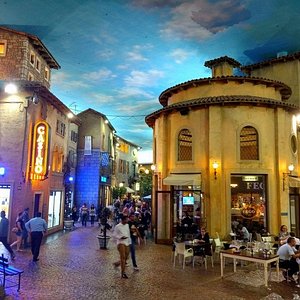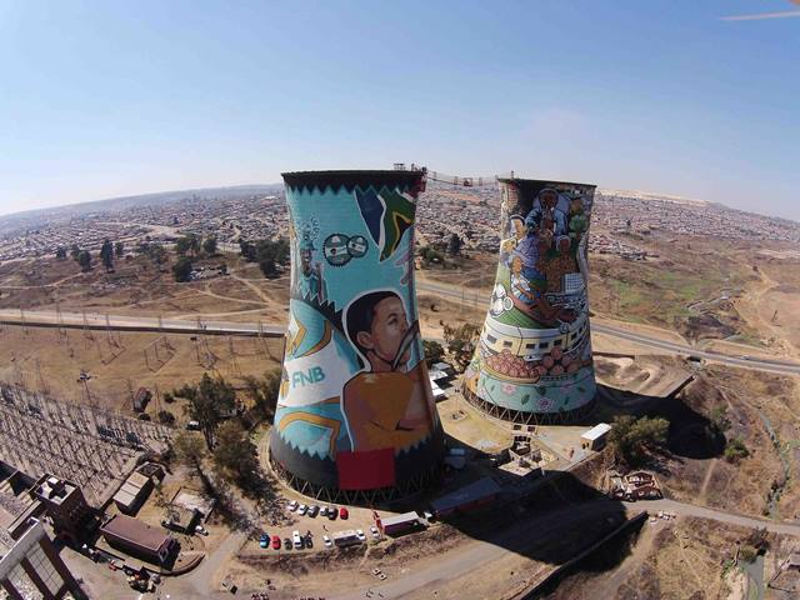Johannesburg North Attractions - Truths
Johannesburg North Attractions - Truths
Blog Article
What Does Johannesburg North Attractions Mean?
Table of ContentsGetting The Johannesburg North Attractions To WorkThe Single Strategy To Use For Johannesburg North AttractionsNot known Details About Johannesburg North Attractions Not known Factual Statements About Johannesburg North Attractions The 15-Second Trick For Johannesburg North AttractionsAll About Johannesburg North AttractionsA Biased View of Johannesburg North Attractions
Nevertheless you need to keep security in mind and visitors should stay sharp at all times when in unfamiliar environments. Speak with the locals when you are in community to learn about the area you are remaining in. Johannesburg North attractions. When on the street (this doesn't relate to mall and other safe environments) finest general guidance is to try your finest to resemble a local and to prevent displaying any type of type of wealth
8 Easy Facts About Johannesburg North Attractions Shown
Professor Revil Mason O. J. (Thomson, 1946) discovered the Witwatersrand's pre-colonial history. His archaeological job exploded the 'em pty land' myth, according to which the region was without human habitation before the arrival of European settlers. In his publications Prehistory of the Transvaal: A Document of Human Task (1962) and Beginnings of Black Individuals of Johannesburg and the Southern Western Central Transvaal AD 3501880 (1986 ), Professor Mason demonstrated the level of social and financial development in the area before Europeans set foot right here.

The Best Guide To Johannesburg North Attractions
In 1878, David Wardrop found gold in quartz capillaries at Zwartkop, north of Krugersdorp. In 1881, Stephanus Minnaar came throughout gold on the ranch Kromdraai, near the Cradle of Humankind.
In March 1886, an outcropping (soon to be called the Main Coral reef) was located, quite fortuitously, on Gerhardus Oosthuizen's ranch Langlaagte. Some state that the Lancastrian coal miner George Pedestrian uncovered this reef. One more travelling English miner, George Harrison (that had actually formerly functioned in Australian mines) acquired a prospecting permit in respect of Langlaagte in May 1886.
He determined to proceed in a mission for greener pastures, and disposed of his Langlaagte case for the princely amount of 10. Alas: under lay the wealthiest goldfield ever before located. The exploration of this abundant auriferous reef prompted a gold rush that indicated the end of bucolic tranquillity in the southerly Transvaal.
It would, within 6 years, come to be the largest town in southerly Africa. Within a years, it would certainly make the Z. A. R. up until then an anarchical and bankrupt little state the wealthiest country in Africa. By the millenium, the Z. A. R. was to go beyond Russia, Australia and the USA of America to end up being the world's leading gold producer, generating even more anonymous than a quarter Going Here of the globe's gold.
Johannesburg North Attractions - Truths
It was referred to as Ferreira's Camp, named after Colonel Ignatius Ferreira. He was a Boer traveler upon whom the British authorities had presented the standing of Buddy of one of the most Identified Order of St Michael and St George (entitling him to the post-nominal letters C. M. G.) in appreciation for his function in the war that had deposed the Pedi king Sekhukhune in 1879.
2 other camps were established: Meyer's Camp on the ranch Doornfontein, and Paarl Camp. The latter was nicknamed Afrikander Camp; numerous people from the Cape Swarm worked out there.

Rumored Buzz on Johannesburg North Attractions
This name gained money by word of mouth, such that the State Secretary affirmed the name to the Mining Commissioner on 9 October 1886. Stands in the town were auctioned on 8 December 1886. While some stands were offered for 10, others were knocked down for just sixpence.
Two years later on, these erven were to change hands for as high as 750 each. The tented camps diminished as a dorp of corrugated iron buildings established and expanded north of the mines located along the Main Coral Reef Road. Areas such as Jeppe's Community (where working-class immigrants erected useful reference their homes) and Doornfontein (where the affluent brand-new 'Randlords' began to create their opulent residences) were quickly added to the ever-expanding map of the community.
Excitement About Johannesburg North Attractions
Aside from the street names, there were no indications of Johannesburg being situated in a Dutch-speaking nation. Years later on, C. W. Kearns O. J. (among the first young boys signed up at St John's University in 1898) would certainly recall: 'An unusual reality concerning Johannesburg was that, although it was in the [Boer Republic], nearly every person talked English and also the Federal government servants dealt with one in English, unless they were initial resolved in the Taal (or Reduced Dutch)'.
Britain had a passion in making certain optimum problems for gold production on the Witwatersrand, and that the gold was exported to London rather than Berlin a crucial made all the much more clamant by the Z. A. R.'s enhancing toenadering with Germany. Mine owners got on a clash with President Kruger, whose plan of monopolistic concessions (frequently granted to his cronies) protected against mining firms from obtaining supplies of materials (specifically dynamite) and labour on their own, cheaper terms
The Single Strategy To Use For Johannesburg North Attractions
In 1890, the Volksraad had actually limited the franchise to white men that had resided in the Z. A. R. for fourteen years or longer, thus disqualifying the majority of the immigrants (that happened to be the significant factors to the fiscus). Nevertheless, anxiety for the ballot was a mere pretense for promoting a different schedule; most uitlanders regarded themselves as short-lived site visitors and had no purpose of staying in the Z.
Report this page